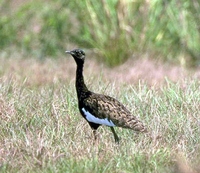Shuklaphanta Wildlife Reserve
Shuklaphanta Wildlife Reserve was declared as a Wildlife Reserve in 1976, after seven years of being managed as a hunting reserve since 1969. It is situated in the southern part of far-western Nepal in Kanchanpur district covering 305 sq km of the land. It is bordered by Mahakai (Sarda) river on the south and west, Chaudhar River on the east and forest belt and cultivations on the north.
The reserve accommodates various species of flora and fauna although the area is small. The main vegetation here is the grassland. The main species of grass found here are the Imperate cylindrical and Saccharum heterpogon, which are used by the locals mainly for thatching. About 26 species of fish, 46 mammals and more than 200 bird species are recorded in this reserve. The Sal forest, Savanna,Asna, Simal, Sissoo, Khair, etc are some of the species of trees found predominantly in the area. Some of the animals found in the reserve are wild elephant, tiger, hispid hare, blue bull, leopard, chital, hog deer and the wild boar. Marsh mugger, Indian python, monitor lizard, cobra, krait and rat snakes are also found in the Shuklaphanta. The reserve is prime habitat for swamp deer with an estimated population of 2000-2500. Sarus crane, swamp francolin, flycatchers, grass owl, warblers and the endangered Bengal Florican are some of the bird species inhabiting the reserve.
The area has a tropical monsoon climate where the temperature varies from 10 to 12 degree C in winter to 17 degree C in spring rising up to 26 degree in summer. Maximum temperature in summer is 40-42 0C. You can also experience jungle safari along with the bird watching. It is one of the best wildlife reserves for watching some of the endangered species of birds and animals. The place is accessible via road as well as air.







